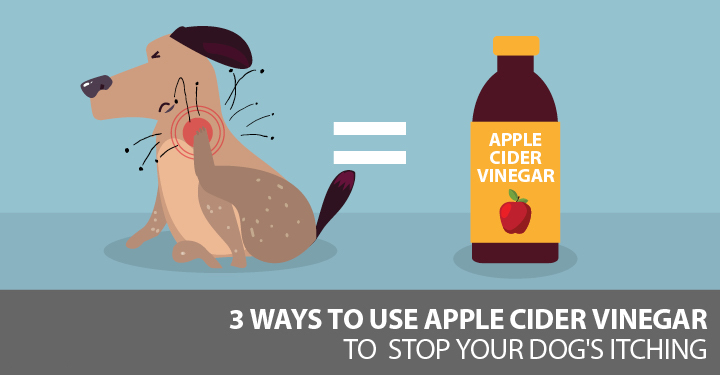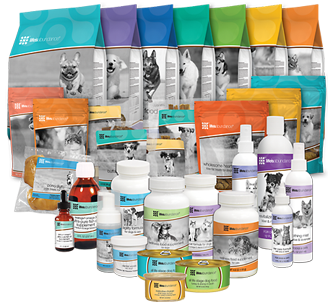3 Simple Ways Apple Cider Vinegar Can Help Your Dog
 When you have a dog suffering from itchy skin or ears, you’ll do just about anything to help. I know I have. And the more things we try, the more we buy… and things start getting expensive.
When you have a dog suffering from itchy skin or ears, you’ll do just about anything to help. I know I have. And the more things we try, the more we buy… and things start getting expensive.
So it’s nice when finding an itch-reliever is as easy as walking to your kitchen cupboard and grabbing some vinegar.
Organic, raw, unfiltered apple cider vinegar, to be exact.
While apple cider vinegar has been touted to help with everything from boosting the immune system and detoxifying kidneys to helping lower cholesterol, here are three popular ways it can help your dog.
Itchy Skin
ACV can help relieve itchy skin and rashes caused by yeast and poison ivy. The best way to apply is by making a 50/50 solution of apple cider vinegar and water in a spray bottle and applying directly onto itchy spots, but NOT open wounds – the vinegar will sting if the wound is raw. If you can’t apply topically and yeast is the main concern, you can feed ACV in your pet’s food or water.
According to Donna Starita Mehan, DVM, in The Veterinarians’ Guide to Natural Remedies for Dogs by Martin Zucker, yeast does not do well in the acid environment ACV creates, so she suggests feeding 1/4 to 1/2 teaspoon twice daily.
 Ear Cleaner
Ear Cleaner
Itchy skin is often accompanied by itchy ears – and nobody wants that. Holistic veterinarian Dr. Karen Becker recommends a proactive cleaning regimen using half ACV and half purified water to prevent ear infection.
- Check your dog’s ears daily for wax and gunk.
- Clean dirty ears using individual cotton balls soaked in the solution.
- Swab out the ears until no gunk appears on the cotton ball.
(If you’re looking for an alternative to using Apple Cider Vinegar to clean your dog’s ears click here.)
Flea and Tick Repellant
Even the healthiest, cleanest dog may at some point face the pesky problem of playing host to one or both of these critters. Fortunately, ACV can once again come to the rescue.
Before your dog goes out, spray him with that 50/50 solution of ACV and water.
And for some added oomph, give 2 tablespoons of ACV in your dog’s food or water during flea and tick season. The same acidity in ACV that repels yeast, also repels ticks and fleas.
Want more ideas for naturally repelling ticks and fleas? Here you go!
NOTE: When using apple cider vinegar internally or topically, remember to monitor your dog for any adverse reactions. Some dogs may need a lesser dose and some dogs may be too acidic already, in which case, apple cider vinegar might not be the answer.
If you haven’t had your fill of ACV uses, here’s an Apple Cider Vinegar Tea Body Rinse by Dogs Naturally Magazine contributor Kelly Holland Azzaro, a Registered Aromatherapist, Certified Clinical Aromatherapy Practitioner, Certified Bach Flower Practitioner, Licensed Massage Therapist, Reiki Practitioner and President of NAHA (National Association for Holistic Aromatherapy).
Apple Cider Vinegar Tea Body Rinse
This body rinse can be useful to restore skin pH, soothe itchy skin, calm rashes and welts, and has some added benefits for keeping biting flies, fleas and gnats at bay.
Mix the following ingredients together in an aroma-safe bottle/jar with cap and shake well before use:
- Apple Cider Vinegar: 1/2 cup
- Brewed Green Tea (cooled): 1/2 cup
- Distilled Water: 1 cup
After bathing, apply this warm water/apple cider vinegar rinse to your animal friend’s coat/skin and massage in. Rinse well and pat dry, or allow the apple cider vinegar mix to air dry for the added benefit of bug relief.
This blended mixture can also be pre-made and kept in a glass jar in the refrigerator (for approximately one or two weeks – discard if moldy), and used for spot treatments for bug bites and stings.


 Life's Abundance Pet Foods
Life's Abundance Pet Foods
Leave a Reply